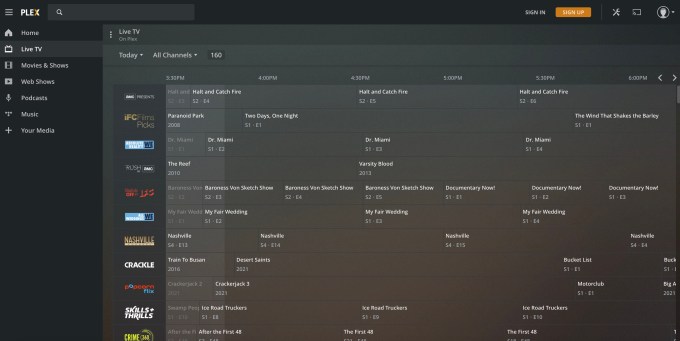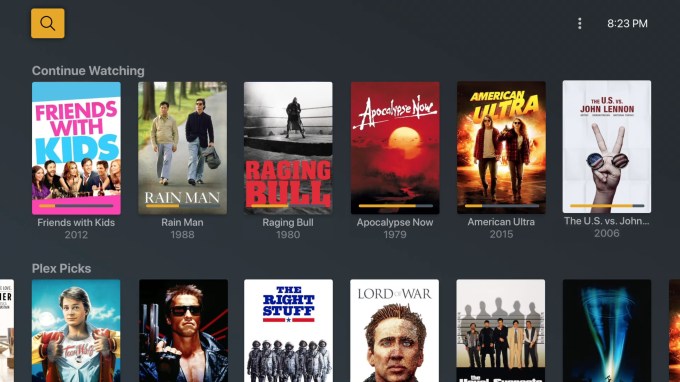News: A quick peek inside Fontinalis, one of Detroit’s best-known young venture firms
Fontinalis, the 12-year-old, Detroit-based early stage venture firm, is known for being among the very first investing outfits to focus squarely on mobility as an overarching theme. It wasn’t a surprising mandate, given that the outfit’s cofounders include Bill Ford, the great grandson of Henry Ford and the executive chairman of Ford Motor Company. Nevertheless,
Fontinalis, the 12-year-old, Detroit-based early stage venture firm, is known for being among the very first investing outfits to focus squarely on mobility as an overarching theme. It wasn’t a surprising mandate, given that the outfit’s cofounders include Bill Ford, the great grandson of Henry Ford and the executive chairman of Ford Motor Company.
Nevertheless, the firm has used its ties to the traditional automotive industry to effectively compete against, and invest alongside, many Silicon Valley venture firms in the intervening years, creating an interesting portfolio along the way. It had stakes in Postmates, acquired in an all-stock deal by Uber, and in Lyft, for example. It also backed the self-driving startup nuTonomy, which sold to auto supplier Delphi Automotive in 2017 for $450 million. Some of its newer bets include Gatik, a startup developing an autonomous vehicle stack for B2B short-haul logistics; Robust.AI, a startup at work on an industrial-grade cognitive platform for robots; and Helm.ai, a maker of driverless car AI.
To get a better sense of what make a deal attractive to Fontinalis, as well as to understand how a venture firm in Detroit ensures that it’s top of mind for the founders it most wants to work with, we talked recently with Dan Ratliff, an investor with Fontinalis who joined the firm nearly seven years ago. Our chat has been edited lightly for length.
TC: Are you a native of Detroit?
DR: I am a native Michigander. I grew up in the metro region; I went to Michigan State. I’ve been here my entire life, except for a year spent in Nashville for grad school, and when I graduated, I moved straight downtown [in Detroit].
TC: From where does the name Fontinalis come?
DR: It’s a Latin name and the name of an outside nature preserve club where Bill [Ford] cultivated a lot of his thoughts on conservation and spent a lot of his youth fly fishing. He also joked that there was no way this name was taken.
TC: How much of the firm’s funding is from Ford Motor Co.?
DR: Fontinalis is very much separate by design. We wanted to be independent and not a strategic VC or Bill’s family office, so from day one, we went to outside LPs and we pulled in 20 to 30 LPs in our first fund, including high-net worth [individuals], family offices, and some institutions. Ford wasn’t even an LP. The company has since come on, but not in a majority position. We also now have a handful of corporate investors, including an OEM that hasn’t been announced yet, and insurance companies. And we have family offices with ties to mobility and the transportation industry and which have a keen interest in how mobility evolves and impacts their businesses. We’ve raised $260 million to date across our funds.
TC: That’s a surprisingly conservative amount in the current market. On the coasts, obviously, we’re seeing a money grab like no other.
DR: We see this as multi-decade opportunity, but there is a bit of a chicken-and-egg problem in the Midwest. There’s not as [ample] a base of angel investors. There are a handful of venture funds but not like on the coasts, where you have a lot of founders or people who’ve been part of companies where they’ve made a lot of money and understand the risk-reward profile. Here, [people are] more conservative; they might have made their wealth in more traditional, versus high-growth startup-type, industries.
I do think with Duo Security selling to Cisco [for $2.35 billion in 2018] and StockX’s awesome rise, we’re developing the right tailwinds to set up an ecosystem, but it requires a lot of different things, including people who are used to being at high-growth companies and are willing to take risks [in the form of equity grants and less] salary.
TC: Fontinalis has a wide range of bets, including on a cognitive platform for robots? What’s the through-line?
DR: The mission of the firm at a high level is to invest in companies and tech that impact the efficient movement of people and goods. Automotive is a component, but so are supply chains and logistics and AI and big data and their impact. So we’ll invest in all modes of transportation — road, rail, bike, air. We also invest in vertical technologies like cybersecurity and additive manufacturing.
TC: These are mostly seed and Series A checks?
DR: We invest in the A and B range, as well as in seed-stage startups and later-stage investments. We view ourselves as bringing the same value that a strategic investor might bring without necessarily the strings that might be attached because we work with a lot of the other corporate VCs and mobility-focused VCs, and we try to see if we can help on the [business development] side to get the startup in front of the right person at the right companies.
TC: Is there any special emphasis on trying to fund startups in Detroit and the broader Midwest?
DR: Our mandate is not geographic specific. We have investments on both coasts, in Northeast Boston, in Tennessee [where Fontinalis’s portfolio company, FreightWaves, the market forecasting and analytics platform is based]. We have deals in Switzerland and Israel. We do look globally; we’re more concerned with making sure we can add value.
TC: One of Fontinalis’s other founding partners, Chris Cheever, is in Boston. Has the firm ever considered relocating outside of Detroit?
DR: No, two of our founding partners are based here. A lot of companies we’ve funded are coming, too, because of the infrastructure here on the manufacturing side and things like the Michigan Mobility Center and we can both facilitate a lot of those introductions as well as be a permanent ‘man on the ground’ for companies that aren’t based here.
TC: Does Detroit have the professional services businesses in place to accommodate startups?
DR: In the last five years, we’ve seen a number of law firms [that work with startups] plant flags in Ann Arbor, and it’s encouraging to see.
Also, from a business standpoint, you have the University of Michigan’s Research Corridor and the automotive industry and OEM suppliers and access to mechanical and electrical engineers whose skill sets are as strong and competitive as anywhere in the country. Over the past five years, too, there has been a huge emphasis, including by city and state policymakers, [to strengthen Michigan’s positioning] including through the Office of Future Mobility and Electrification and Detroit’s economic development arm, which is bringing startups into the city. There are a lot of resources going in on the back of what you’ve seen on the real estate side and all that [billionaire investor] Dan Gilbert has done [for the city], including buying up skyscrapers and making them Class A office space and putting them back on the market.
TC: I had the opportunity to talk with Dan about the quality of life there and he’s obviously a big proponent.
DR: Michigan and Detroit are super unique. The suburbs feature really strong school systems, and living in Detroit proper is awesome. It feels like a startup of its own, with new restaurants opening up and new construction and people everywhere on patios, even while Detroit maintains its historic feel, with many buildings that are 100 years old. You also have the Great Lakes and skiing and the outdoors. You can draw comparisons to other startup hotbeds, but there are definite diamond-in-the-rough aspects to being in Michigan.
TC: Anecdotally, does it feel like people who grew up there are staying, rather than heading off in other directions?
DR: When I was an undergrad, 75% of people said, ‘I’m going to Chicago or New York.’ That has changed. Now people are moving to downtown Detroit. There’s high-end real estate, a walkability aspect, and if you’re a sports or music fan, the access you have to things like that is unrivaled. You don’t have to plan anything because there are 10 different things to choose from on a Friday night, from theaters to stadiums to art galleries. There are a lot of things pulling in different types of people.







